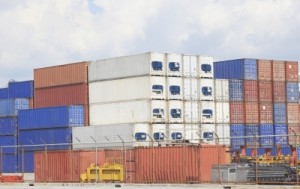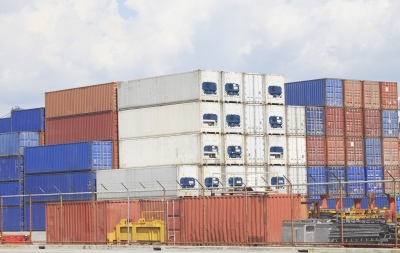 A recovery for the Philippine shipping industry may be in the cards this year, according to Edgar Milla, president of the Association of International Shipping Lines.
A recovery for the Philippine shipping industry may be in the cards this year, according to Edgar Milla, president of the Association of International Shipping Lines.
“We believe that the phenomenon affecting the worldwide shipping industry has not insulated the Philippines,” Milla told PortCalls in a recent email. The global maritime sector has seen lackluster growth in the last few years, plagued by tepid volumes owing to a shaky economy, overcapacity and increasing regulatory requirements.
Locally, “2013 volume had been flat with import volumes increasing 2.4% and export volumes increasing 1.5% only versus 2012. Exports have been severely affected by the extreme weather patterns, especially in Mindanao,” Milla said.
“However, the industry remains to be vibrant and has contributed a lot to the local businesses and the economy,” he said.
“The industry is seen to benefit from the various foreign investments in the manufacturing industry, and we continue to have a lot of confidence in local consumption which is evident in the Philippines’ GDP numbers.”
According to the National Statistical Coordination Board, the domestic economy grew by 7% in the third quarter of 2013, driven by the services sector with the robust performance of real estate, renting and business activities, trade and financial intermediation and sustained by accelerated growth of the industry sector.
The investment-grade ratings the Philippines earned from three credit-watch institutions also helped boost the local investment climate.
In 2014, the Philippine economy is predicted to expand by 7 to 7.5% on the back of the country’s strong fundamentals, according to investment bank First Metro Investment Corp.
Calamities
Last year was a particularly trying year for the local shipping industry though. The destruction wrought by Typhoon Bopha (local name Pablo) on banana plantations in Mindanao in late 2012 took its toll on 2013 shipments of banana, a major export commodity, and its effects continue to be felt by both the banana and shipping industries today.
Various other calamities — both natural and man-made — certainly tested the mettle of supply chain and logistics professionals, according to Arnel Gamboa, president of the Supply Chain Management Association of the Philippines (SCMAP).
In one way or another, the industry was affected by the Zamboanga siege, the Bohol mega-earthquake, supertyphoon Haiyan, the collision of 2GO vessel St Thomas Aquinas and Sulpicio Express Siete in Cebu, and the revamp of the Bureau of Customs that involved successive transitions of personnel.
Gamboa said “logistics connectivity and disaster preparedness were underscored once again as very important areas for development in our country, especially that we live in an archipelagic nation located within the Pacific ring of fire!”
Despite the setbacks, the SCMAP said the perceived 6-7% growth of the country’s GDP will translate to similar growth in logistics activities and would mean better business for 2014.
The ASEAN Economic Community which will become reality in 2015 also offers many trade opportunities but at the same time “provides risks that can consume or close down businesses that will not be competitive enough come 2015,” the SCMAP president said.
“As we open our gates to regional market forces and demand, local players must compete with other regional providers and suppliers in order to take advantage of the singular principle of economic, political and cultural integration in ASEAN,” Gamboa said.
“Filipino ingenuity and resilience will no doubt give the Philippines an obvious advantage but with policies, infrastructure, laws and training still at a backlog, there is much catching up to do in 2014,” he noted. ––Roumina M. Pablo
Image courtesy of Khunaspix / FreeDigitalPhotos.net





